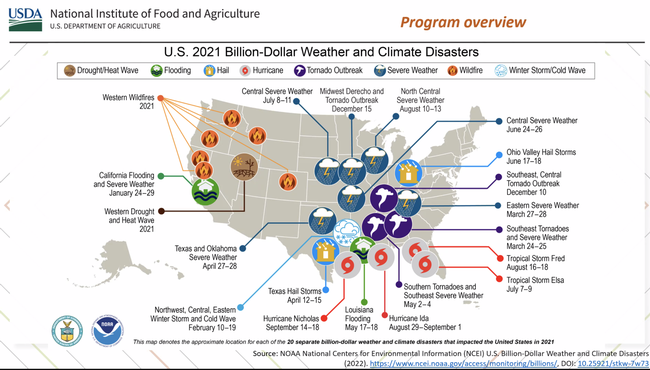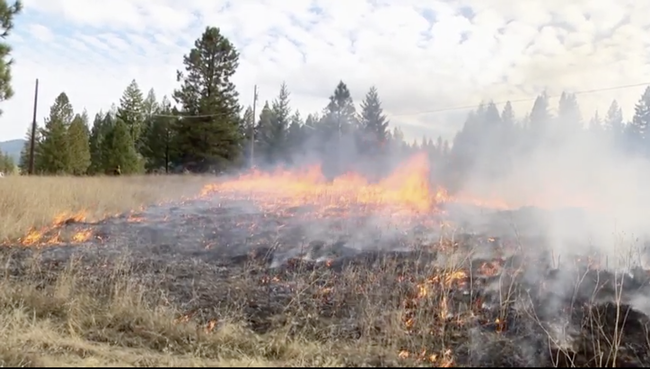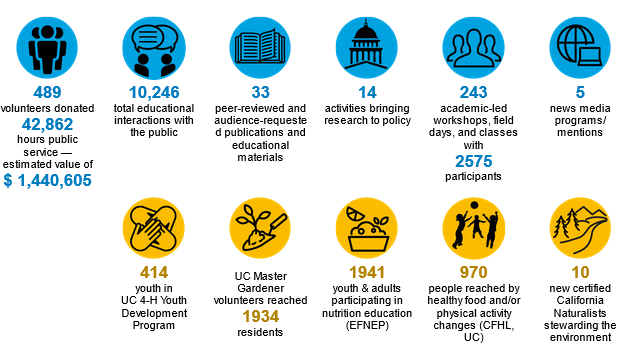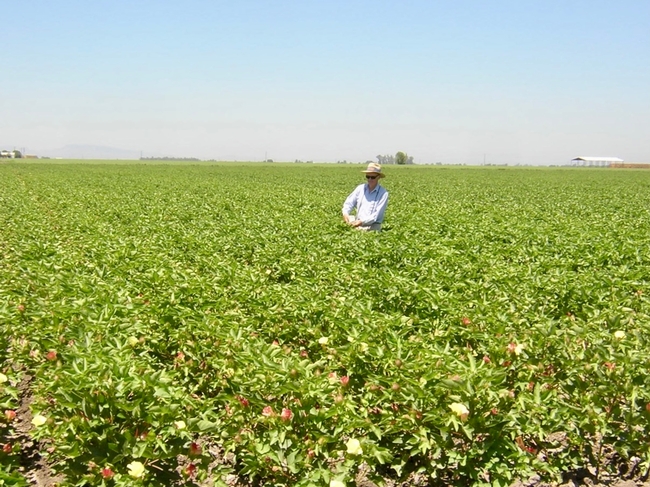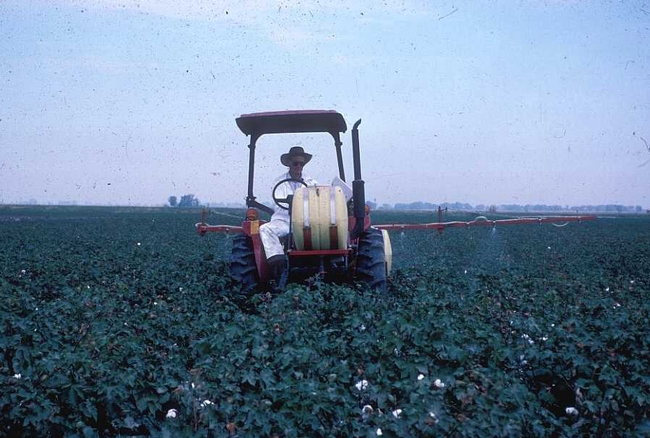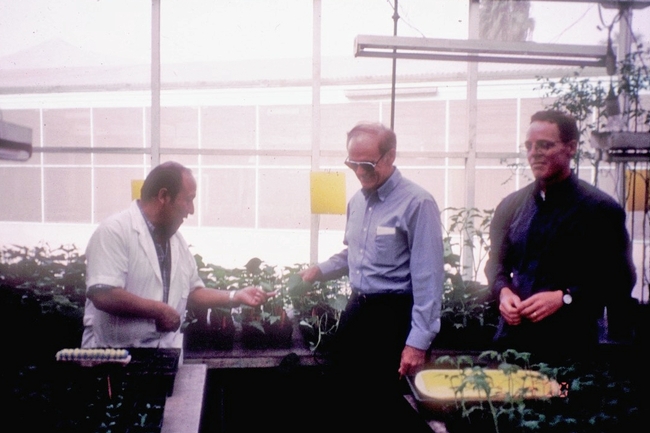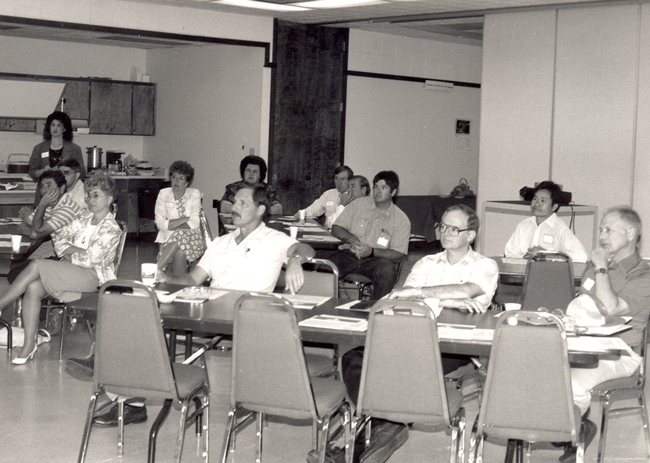- Author: Pamela Kan-Rice
Last week President Biden announced an executive order to cancel up to $20,000 in federal student loan debt for all borrowers with an individual income below $125,000 ($250,000 for joint tax filers).
If you have federal student loans, you are also likely eligible for cancellation of your entire remaining federal debt following 10 years of working full-time for UC (or another qualifying employer) and making loan payments.
Eligibility for the Public Service Loan Forgiveness (PSLF) program has been expanded under a time-limited waiver that currently expires Oct. 31, 2022. Even borrowers who were previously ineligible or missed payments can now receive PSLF. The University of California (EIN: 94-3067788) is a qualified employer for the PSLF program.
So far, the average loan balance forgiven under PSLF nationally is over $60,000 per borrower.
UC employees are invited to attend a #UCStudentDebtChallenge Virtual Town Hall on Wednesday, Aug. 31, to hear experts from the U.S. Department of Education, UC Faculty and UC Human Resources explain how Public Service Loan Forgiveness works and how to apply. Registration is required.
Attend a morning or afternoon session on Wednesday, Aug. 31:
- 10-11:30 a.m. PT
- 2-3:30 p.m. PT
Register at https://fidelityevents.com/UofCali.
For more information about the Public Service Loan Forgiveness Program, visit https://ucnet.universityofcalifornia.edu/working-at-uc/public-service-loan-forgiveness.html.
- Author: Derecka Alexander, American Association for the Advancement of Science Policy Fellow
Informational webinars on Sept. 14, Dec. 8
The increase in the intensity and frequency of extreme weather-related disasters across the country may have many of us wishing we could click our heels and go back to times when weather did not disrupt our agricultural, forestry and rangeland production systems as often as it does today.
In addition to their devastating impacts on people and communities, disasters contribute to land degradation and adversely impact agricultural supply chains at the production, processing, distribution and consumption stages.
In response to extreme temperatures, heavy downpours, droughts and blizzards, USDA's National Institute of Food and Agriculture is introducing a new program to help communities protect the nation's food supply.
The Rapid Response to Extreme Weather Events Across Food and Agricultural Systems program reflects a new cross-cutting program area within NIFA's Agriculture and Food Research Initiative. The program is housed within AFRI's Foundational and Applied Science program and is designed to rapidly deploy strategies, and fill knowledge and information gaps to protect the nation's food and agricultural supply chains — at the production through consumption stages — during and after extreme weather disasters.
Disasters happen when a community is not appropriately resourced or organized to withstand the impact, and whose population is vulnerable because of poverty, exclusion or other social disadvantages, according to United Nations Office for Risk Reduction official Mami Mizutori.
The new program area contains two grant types: Strengthening Standard and Coordinated Agricultural Project. Project proposals for either grant type will directly address effects associated with an extreme weather event or disaster that has occurred. In addition, applications will present projects that address one or more of the following emphasis areas:
- Agroecosystem Resilience
- Agricultural Commodity and Nutrition Security
- Health, Well-Being and Safety
The intention of the Rapid Response to Extreme Weather Events Across Food and Agricultural Systems program is to fund projects that provide solutions, which may include trainings, communication strategies, tools and technologies, food supply logistics, and climate-smart practices that can be rapidly adopted by various end-users. These projects will also explain how adoption potential of proposed solutions will be measured.
NIFA is committed to alleviating the impacts of extreme weather events and disasters across the food and agricultural system. NIFA understands the importance of supporting timely, critical research and Extension activities following extreme weather events and disasters.
For more information, or if you have any questions about this new program area priority, please visit AFRI Foundational and Applied Science RFA or send an email to afri-rapidresponse@usda.gov.
Live FAQ webinars will be held at noon on Sept. 14 and Dec. 8. Please check NIFA's events page to register for upcoming live Q&As.
When planning a proposal that includes communication, contact Linda Forbes, director of UC ANR Strategic Communications, at lforbes@ucanr.edu.
- Author: Christina Becker
County report templates populated with 2021 data are available on the Government Relations templates web page. Check out examples of how some UCCE offices use the templates. These reports highlight key metrics and measured outcomes captured in UC ANR program information systems.
Use of the data is encouraged to help with the following:
- Advocacy - share with county government officials/staffers
- Accountability - can help meet local reporting requirements
- Communications - build understanding and support for UCCE programs
“These reports are fantastic – they are colorful, rich with imagery and fun to read. Most importantly, the content is easy to absorb by using infographics and photos,” said Anne Megaro, government and community relations director.
For help, please contact Christina Becker in UC ANR Program Planning and Evaluation at christina.becker@ucop.edu. There is also a recorded training at https://www.youtube.com/watch?v=--hQ55hLqpk.
- Author: Pamela Kan-Rice
Training courses are now available online at UC Learning Center (LMS site at UC Davis) for the University of California's new Common Chart of Accounts. This training is an important part of the successful implementation of Aggie Enterprise, the new financial software being implemented by UC Davis and UC ANR.
If you currently use Decision Support, Kuali, AggieBuy or the Cognos Reporting System, you will want to make sure to attend these two courses to get acquainted with the new account structure.
Many of you have already received the invitation to start the Level 1 courses. For those of you who have completed the training and have questions, your ANR Aggie Enterprise Project Team will be offering office hours starting in September to answer any questions you may have.
If you have questions in the meantime, please direct them to Raghu Goradia (rjgoradia@ucanr.edu), Emily LaRue (elarue@ucanr.edu) or Sonia Scott (sonia.scott@ucop.edu).
For more information, please visit the Aggie Enterprise website athttps://financeandbusiness.ucdavis.edu/aggie-enterprise.
- Author: Pamela Kan-Rice
Bill Weir, UC Cooperative Extension advisor emeritus, passed away on July 28 in Merced. He was 84.
Born in in San Antonio, Texas, Weir earned his B.S. at Texas A&M University and his M.S. in vegetable crops and his Ph.D. in soil science at UC Davis.
Weir began his UC career as a staff research associate at UC Davis in 1966. In 1974, he joined UC Cooperative Extension as a field crops advisor in Merced County, where he worked until he retired in 2002. Weir worked on sugar beets, rice, barley, wheat, corn, dry beans, rye and oats, but is best remembered for his contributions to cotton. He became known as the "Father of narrow-row cotton" as his research showing increased cotton yields convinced growers to switch from planting on 40-inch beds – the width of a horse – to 30-inch beds.
In the 1970s, after observing that sunlight reached the soil between rows even late in the season, Weir began comparing narrow-row plantings of cotton with conventional 40-inch spacing, experimenting with various cotton varieties and plant populations.
Working with a local Merced County grower, Weir designed the first 30-inch spindle cotton harvester in the world by converting a conventional 40-inch picker. “Results of our tests led both John Deere and International Harvester to produce commercial 30-inch spindle cotton harvesters,” Weir wrote in a UC Delivers story.
By the time he retired, greater yields from narrow-row cotton generated over $7 million more revenue per year for growers in Merced County alone. Growers in other counties, other states and other countries adopted the practice.
Weir was also part of the research team that developed a technique called plant mapping. “We learned how to let the plant tell us what it needs and then act accordingly,” Weir said. “We were able to cut back on inputs, saving growers money.”
Scott Stoddard, UCCE vegetable crops farm advisor for Merced and Madera counties and director for UCCE in Merced County, joined UCCE in 1998. For the first four years, he worked as a staff research assistant with Weir on research projects in cotton, tomatoes, melons and sweetpotatoes.
“I was hired as an SRA to help Bill with his new veg crops responsibilities. Bill taught me so much about central California agriculture,” Stoddard said.
Stoddard recalled accompanying Weir to view test plots.
“We would ride together in his Chevy pickup – Bill preferred Chevrolet over Ford because they rode smoother – to a test plot and discuss soil types and salinity and the impacts on crop selection, drainage, and the eventual creation of Kesterson Wildlife Refuge. While cotton was always his main crop, he knew a lot about the melon industry and how to pick a ripe honeydew or watermelon in the field – which is a lot harder than a cantaloupe!”
“Bill preferred taking the back roads to get to farm calls and test plots. We would take the ‘long way' to West Side Research and Extension Center in Five Points, as it gave him the opportunity to see what was happening with all the different crops being grown on the west side of Merced and Fresno counties,” Stoddard recalled.
“August was his favorite time of the year because that's when everybody, from tractors to trucks, was so busy with harvest of so many commodities. He never complained about the 100-degree days – in fact I think he enjoyed the heat.”
During his career, Weir authored or coauthored 195 peer-reviewed or scientific papers. His many awards included the 1993 and 1995 Certificate of Excellence Awards from the American Society of Agronomy.
When he retired, Weir said, “Over the years, there were many changes in Extension. But, all in all, Extension has been great for me. If I were independently wealthy, I still would have liked to do what I did during my career. That's how much I've enjoyed working in agriculture, helping farmers and being a part of Extension.”
In retirement, Weir became a private crop consultant and enjoyed gardening and wood working.
He is survived by his wife Carol, son Daniel Louis Weir and daughter-in-law Teresa, daughter Deborah Leanne Weir and eight grandchildren.
Read more about Weir's life at https://www.legacy.com/us/obituaries/mercedsunstar/name/billy-weir-obituary?id=36127405.

